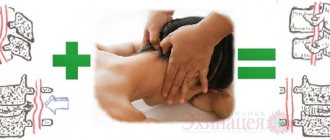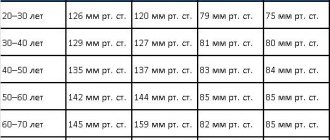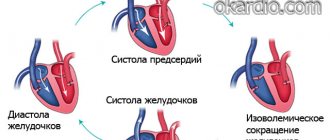The level of blood pressure (BP) in a person is determined by two indicators - upper and lower pressure. The top indicator is scientifically called systolic pressure, and the bottom is diastolic pressure. Together, both indicators show how correctly the heart muscle (myocardium) works, and its normal functioning depends on the work of the large arteries. They are a buffer that prevents the negative influence of external factors on human organs and systems.
After contraction of the cardiac sac, the arterial valve takes a closed position, due to which the flow of blood stops, and the flow of blood from the pulmonary artery, enriched with oxygen, begins. At the next beat, the process changes and blood moves throughout the body. The indicator that is responsible for normal blood flow is the lower, diastolic.
Pressure measurement procedure
Usually, a person’s systolic, upper, pressure increases, and the lower depends on it and jumps on its own in very rare cases. If its level is stably elevated simultaneously with the upper level or in isolation, essential hypertension is diagnosed. To determine whether a person’s circulatory and cardiovascular systems are functioning normally, one should also know about pulse pressure - this is the difference between the upper and lower limits of both indicators.
To determine blood pressure values, there is a special device - a tonometer. The devices are now sold as automatic, semi-automatic and manual, which are gradually going out of fashion as new affordable and improved models become available. The automatic tonometer independently determines to what level air needs to be pumped into the cuff to fully record the result.
But when using a hand-held device, you should adhere to a certain algorithm of actions:
- the cuff is fixed at a distance of 2–3 cm from the elbow, after which air intake begins using a rubber bulb;
- the size of the cuff should not be larger or smaller than the volume of the arm, it is better to choose the appropriate one for the correct measurement results;
- blood pressure is measured in a quiet environment, 30–40 minutes after the last meal;
- During the procedure, the person should not move, laugh or talk;
- the pressure gauge scale should be in front of the eyes, and the air should be pumped 30–40 mmHg higher than the expected systolic pressure;
- To record the readings as accurately as possible, measurements are taken on both hands twice, with an interval of 3–5 minutes.
No ads 1
After the measurements, the readings are deciphered if the procedure was performed correctly, taking into account the following points. The upper indicator (systolic) is recorded at the first audible pulse beat in the overstretched arm; it is the cardiac one. The systolic indicator indicates the force with which the heart pushes blood into the blood vessels. A person’s lower pressure is recorded when the heart muscle relaxes; it indicates the ability of the capillary walls to resist blood flow.
Pressure indicators depend on various factors - systolic characterizes the functioning of the myocardium, and diastolic depends on the functioning of the renal system (it is the kidneys that produce the hormone renin, which is responsible for the tone and elasticity of capillaries). The more elastic and durable a person’s blood vessels are, the more normal the diastole is.
How to determine pressure by pulse
Without a device, it is impossible to accurately determine the pressure, so a pulse determination method is proposed. To do this, you need to place your index and ring fingers on your wrist and apply pressure. The radial pulse can be measured in 30 seconds by placing a watch with a second hand in front of you.
The counted beats must be multiplied by two to get the number of beats per minute. With increased pressure, the pulse is clearly palpable, but with low pressure, it disappears with pressure and becomes imperceptible. In an adult, a pulse of 60-80 is considered normal.
By placing two fingers on the carotid artery, you can also measure your pulse rate. Measurement using these methods is quite accurate, but if you have a heart rate monitor, you can use its main function and get data immediately. There are chest and wrist heart rate monitors; they are used mainly by athletes for optimal load distribution.
If you listen to yourself and try to describe a headache: with high blood pressure, there is pain in the back of the head and temples, characterized by particular severity, strength and sharpness, and may be accompanied by nausea and vomiting; with low blood pressure, the pain affects the frontal and temporal regions and is described as dull and pressing.
A clear symptom of high blood pressure is redness of the skin. Pay attention to your body and face, if there is a vascular network, then the pressure is increased. With low blood pressure, the opposite effect occurs: the face will have a pale, sallow tone.
General health can also tell a lot about blood pressure. A feeling of weakness, a blurred “picture” before the eyes, ringing in the ears, nervousness, and problems sleeping indicate an increase in blood pressure above normal. If these symptoms recur after rest and sleep, you should definitely consult a doctor.
What does the change in indicators depend on?
The permissible minimum difference between the upper and lower values, as well as the normal blood pressure for people depending on age, will be described below. But the reasons for the jumps in these numbers can be various reasons. As a result of numerous studies, it has been proven that the standard of living, external factors and health status in general affect the results of blood pressure assessment.
If for one person an increase in indicators by 10–20 units is considered normal, then for another it can turn into a disaster.
In 90% of cases, overestimation of blood pressure is recorded in obese people, and age also affects blood pressure levels. In an elderly person, blood vessels lose their former elasticity, and the body as a whole and the cardiovascular system in particular undergo age-related changes - as a result, blood pressure increases. However, over the past decades, signs of persistent hypertension have also been observed in very young people aged 30–35 years.
No ads 2
The following factors influence this:
- nature of the diet;
- bad habits (smoking and alcohol abuse);
- lack of proper rest;
- excessive brain and physical activity, leading to exhaustion of the body;
- emotional overload and frequent stressful situations.
If the pressure is increased by 10–20 units after intense physical activity (sports, carrying heavy weights), this is absolutely normal and, after a while, the indicators will return to the initial values on their own. Blood pressure is usually reduced during sleep and immediately after waking up, since the body is in a state of rest and relaxation.
Completing all vital processes, before going to bed, the body also reacts with a jump in blood pressure by 10–20 units. Low blood pressure occurs in women during the menstrual cycle, during pregnancy, and in men during colds.
Reasons for changes in pressure
The change in pressure can be short-term, but can also be systematically repeated. The reasons may be:
- Sensitivity to food, including allergic reactions;
- Hormonal imbalances;
- Stress;
- Diseases of the genitourinary system;
- Alcohol abuse and smoking;
- Heart failure;
- Poor nutrition;
- Diseases of the digestive system;
- Changes in weather conditions;
- Use of medications;
- Overwork.
Norm of upper and lower blood pressure
Constant fixation of indicators within 120/80 or 140/90 means that a person’s heart muscle and renal system are functioning correctly, and there is no reason to worry about health. In young people, indicators of 90/60 are considered normal, if the person feels well and does not complain of dizziness, weakness and weather sensitivity.
Weak pulse with high blood pressure
Also, indicators of upper and lower blood pressure are divided according to the norm depending on age groups:
- 16–20 years – normal values are 100/70, 120/80;
- 20–45 years – there is no reason to worry if the pressure is fixed at 120/70, 130/80;
- 50–60 years – normal blood pressure is 140/90;
- over 60 years old - blood pressure fluctuates within 150/90.
A gradual increase in blood pressure with age is the result of changes in the condition of the vascular walls, capillaries lose their former elasticity, and the heart muscle wears out. If you do not keep the aging process and natural wear and tear of the body under control, a disease may develop that affects all internal organs and systems and requires correction with medications - it is called hypertension.
The first degree of hypertension occurs with an increase in systolic pressure to 160 mm Hg, the second degree is diagnosed at the upper level of 180 mm Hg, and the third (dangerous to health and life) is characterized by surges in systolic blood pressure above 180 mm Hg.
Criteria for high blood pressure
The following characteristic changes in the body may indicate problems with blood pressure:
- Stomach. A sedentary lifestyle and poor nutrition lead to problems with the body's systems, including the cardiovascular system.
- Complexion. Red skin indicates high blood pressure, pallor indicates low blood pressure.
- Red eyes. Visual impairment is one of the symptoms of hypertension, so the condition of the eyes is indicative.
- Pulse. Increased pressure is felt when pressing on the wrist, decreased pressure is not felt or stops with pressure.
- Dyspnea.
- Pain in the heart area.
- Pain in the back of the head.
Normal difference between systolic and diastolic pressure
The difference between the upper and lower blood pressure readings is called pulse pressure (PP), normally it is 40 units. A deviation in both directions of 5–10 units is allowed; this condition is not considered critical, therefore, if the normal PD is 30–50 units, there is no cause for concern. Both the physical and mental state of a person’s health can affect pulse pressure.
No ads 3
Insufficient nutrition, weather sensitivity, physical activity and emotional stress can temporarily reduce PD values, but when normal living conditions are restored, they return to normal on their own. A large, stable difference between systolic and diastolic pressure indicates pathologies developing in the body, the causes and etiology of which need to be clarified with the help of doctors.
A change in well-being will be noted when the PD deviates by more than 10 units in one direction or the other. For example, if a person has always recorded a difference between blood pressure readings of 50 units, then a drop in the norm to 30 units will already affect his condition, he may be talking about the emergence of health problems. Even if the pulse pressure remains within acceptable limits, it will still be considered low.
Why do you need to measure blood pressure?
High blood pressure can now also affect young people. The problem of hypertension is acute, and this can lead to irreversible consequences.
Symptoms of hypertension:
- Floaters before the eyes;
- Tinnitus;
- Redness of the skin;
- Irritability;
- Chills;
- Sleep problems;
- Anxiety;
- Deterioration of vision;
- Weakness;
- Deterioration in performance and memory;
- Cardiopalmus;
- Sweating;
- Headache;
- Dizziness;
- Nausea.
Symptoms can appear separately or in combination for a short time, pass after sufficient rest and return with renewed vigor. It is easy to miss the disease at the initial stage, since it looks like ordinary overwork. When you contact a specialist on time, you have a chance to get rid of symptoms and forget about the disease by adjusting your lifestyle.
Advanced hypertension may one day manifest itself with an attack; the outcome may be complicated by the following disorders:
- Stroke;
- Heart attack;
- Brain swelling;
- Pulmonary edema;
- Death.
A hypertensive crisis is characterized by a sharp deterioration in health, obvious manifestation of symptoms, including vomiting. When it occurs, you should call an ambulance. While waiting, the patient needs to take a comfortable position, calm down, relax, and, if necessary, take a sedative and an extra dose of medication for hypertension. A cold compress is applied to the forehead and heating pads are applied to the legs for 15 minutes.
Interpretation of deviations from the medical norm
Deviations of pressure from the medical norm may be due to:
- Heart failure.
- Blood viscosity. Changes in blood quality are usually felt with changes in lifestyle and nutrition. Thick blood can also be caused by diabetes or an autoimmune system disease.
- Vascular pathology or deterioration in their quality. Excessive loads on the vessels reduce their elasticity, causing the quality of blood circulation to suffer.
- Presence of plaques. The slagging of blood vessels directly affects their patency.
- Hormonal changes that caused a narrowing of the lumen of blood vessels.
- Diseases of the endocrine system.











